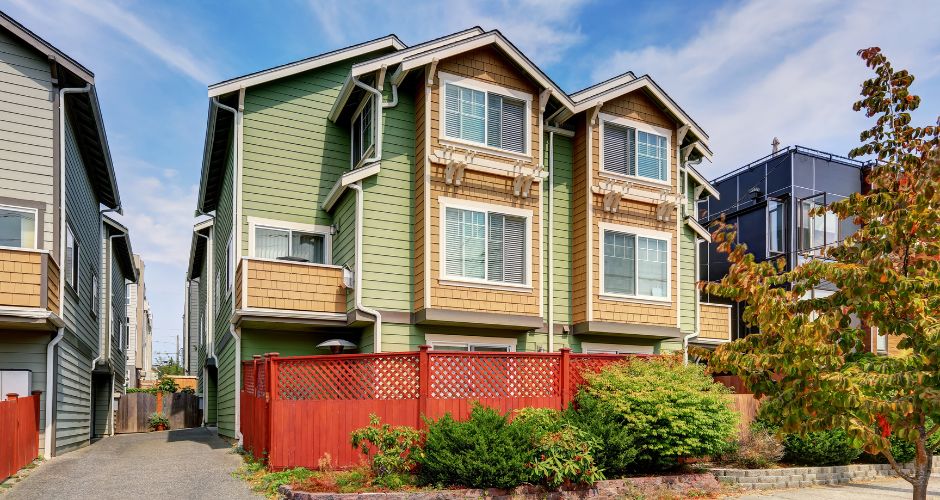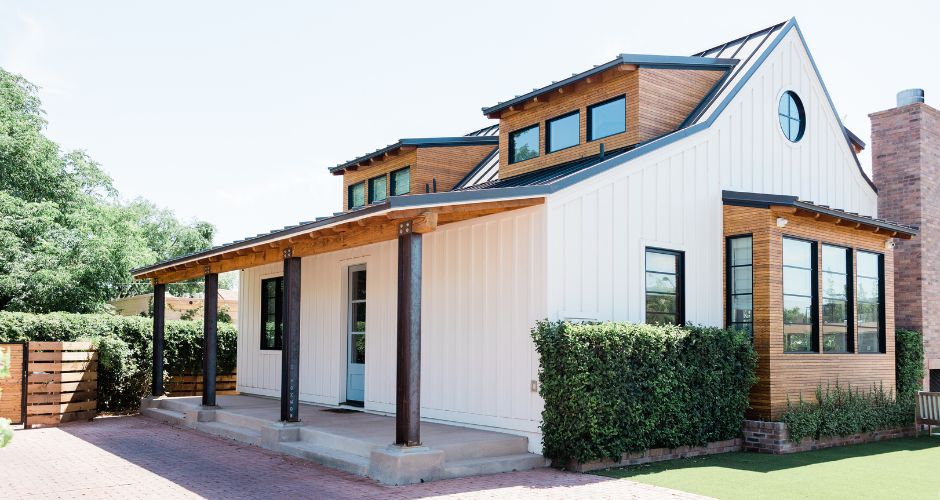13 Tips on How to Choose an Exterior Paint Color for Home

Are you thinking about rejuvenating your home’s exterior by applying a fresh coat of paint? The color you pick plays a crucial role in influencing your home’s curb appeal and overall visual appeal. Given the abundance of choices, making the right selection can be quite daunting. In this comprehensive guide, we’ll delve into 13 Tips on How to Choose an Exterior Paint Color for Home.
An “Exterior Paint Color” refers to the specific hue or shade applied to the outer surfaces of a building, such as a house or commercial structure. This paint color plays a crucial role in determining the appearance, aesthetics, and overall visual appeal of the structure when viewed from the outside.
The choice of an exterior paint color can significantly impact a building’s curb appeal, harmonization with its surroundings, and even its market value. It is often chosen based on architectural style, location, climate, and personal preferences. Selecting the right exterior paint color is essential in enhancing a property’s visual identity and attractiveness.
Choosing the Perfect Exterior Paint Color
The color you choose for your home’s exterior is like its signature. It’s the first thing people notice and sets the tone for your property. Selecting the right color can enhance your home’s beauty, increase its curb appeal, and even raise its value. To make this critical decision, follow these steps:
1. Consider Your Home’s Architectural Style
Your home’s architectural style should influence your paint color choice. Different types pair well with specific color palettes. For example, pastel colors enhance a Victorian home’s charm, while modern designs often benefit from neutral tones.

2. Harmonize with the Neighborhood
While you want your home to stand out, it’s essential to consider the color schemes of nearby houses. Your choice should both complement and contrast neighboring colors to create a harmonious yet distinctive look.
3. Account for Climate and Location
Your geographic location and climate should guide your color choice. Darker colors may be better for cooler regions, while lighter colors can reflect heat in hot climates. Consider the impact of weather on your paint’s longevity.
4. Test Colors in Natural Light
Paint samples can appear different in natural sunlight compared to indoor lighting. Apply samples to a small section of your exterior and observe them throughout the day to ensure your satisfaction.
5. Utilize Online Color Visualization Tools
Many paint manufacturers offer online tools to experiment with colors on a digital image of your home. This helps you visualize how your chosen colors will look on the exterior and explore various combinations.
6. Coordinate with Permanent Features
Your home’s permanent features, such as the roof, masonry, and landscaping, should complement your chosen exterior paint color. A cohesive color scheme enhances your property’s overall appearance.
7. Mind Trim and Accent Colors
Remember trim and accent colors, which add depth and character to your home’s facade. Carefully select these colors to create contrast and highlight architectural details.
8. Express Your Style
Your home should reflect your style. Don’t hesitate to incorporate your favorite colors into your exterior design to make it uniquely yours.
9. Consider Resale Value
If you plan to sell your home, choose colors with broad appeal among potential buyers. Neutral and timeless colors often increase a home’s marketability.
10. Test Color Samples
Before committing to a complete paint job, apply small samples of your chosen colors to different areas of your home’s exterior to ensure they work well in your property’s context.

11. Think About Maintenance
Darker colors may require more frequent maintenance due to wear and fading. Consider your long-term maintenance preferences when selecting a color.
12. Be Aware of Regulatory Restrictions
Some communities and homeowners’ associations have rules governing exterior paint colors. Check these regulations to avoid issues or penalties.
13. Seek Professional Guidance
If you need more clarification about your color choice, consulting a professional designer or paint expert can provide valuable insights to help you make an informed decision.
By following these 13 tips, you’ll be well-prepared to choose the perfect exterior paint color that enhances your home’s curb appeal and creates a beautiful facade you’ll cherish for years. Selecting the right exterior paint color is an exciting and creative endeavor that will leave a lasting impression on your home’s aesthetics.
FAQ’s
Why is choosing the right exterior paint color important?
Selecting the right exterior paint color can significantly impact your home’s curb appeal and overall aesthetic. It enhances your property’s beauty and can even increase its value.
Why should I test colors in natural light?
Natural light can make paint colors appear different from indoor lighting. Testing your chosen colors under various lighting conditions helps ensure you’re satisfied with how they look.
Why is it important to complement permanent features of my home?
Your exterior paint color should complement permanent features like the roof, stonework, and landscaping. This enhances the overall appearance of your home.
How can I check for regulatory restrictions on paint colors?
Some communities and homeowners’ associations have restrictions on exterior paint colors. Ensure you review these rules before making a decision to avoid potential issues or fines.






One thought on “13 Tips on How to Choose an Exterior Paint Color for Home”